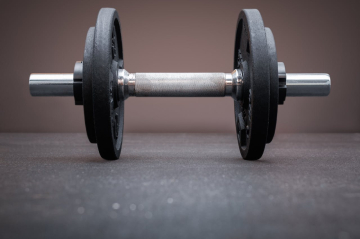Physical strength is an essential component of overall well-being and athletic performance. Not only is it crucial for everyday activities, but it also improves metabolic health, bone density, and body composition. Developing strength effectively requires a comprehensive approach that encompasses nutrition, proper training, recovery and consistency. In this article, we will explore key strategies and principles to maximize strength development.
Understanding the Force.
Types of Force.
Before we delve into how to develop strength, it's important to understand the different types of strength:
- Maximum Strength: The maximum amount of force that a muscle or muscle group can generate in a single contraction.
- Explosive Strength: The ability to generate force quickly, crucial for activities such as sprinting and weightlifting.
- Strength Endurance: The ability of a muscle to resist fatigue and maintain a contraction for a prolonged period.
- Relative Strength: The maximum strength in relation to body weight, important for sports that require body weight movements such as gymnastics.
Principles of Strength Development.
Strength development is based on several fundamental principles:
- Progressive Overload: Gradually increase workload to stimulate muscle growth and adaptation.
- Specificity: Tailor training to the individual's specific needs and goals.
- Variability: Periodically change exercises, volume and intensity to avoid stagnation.
- Recovery: Allow adequate time for muscles to repair and strengthen after training.
Strategies to Develop Strength.
Weight training.
Weight training is one of the most effective ways to build strength. Here are some key aspects to consider:
Selection of Exercises.
- Compound Exercises: These movements, like the deadlift, squat, and bench press, involve multiple muscle groups and joints. They are effective in developing overall strength.
- Isolation Exercises: Movements like biceps curls and triceps extensions target specific muscles. They are useful for correcting muscle imbalances and strengthening weak areas.
Periodization of Training.
- Training Cycles: Dividing training into phases (e.g., hypertrophy, maximal strength, and power) can help avoid plateauing and promote continued improvement.
- Load and Volume: Adjust the amount of weight lifted and the number of repetitions and sets. For example, for maximum strength, it is recommended to lift heavier weights with fewer repetitions (1-5 repetitions per set).
Technique and Form.
- Correct Execution: Maintaining proper form is crucial to preventing injuries and maximizing movement efficiency. It is advisable to learn the correct technique under the supervision of a certified trainer.
Nutrition.
Nutrition plays a crucial role in developing strength. Without a proper diet, your muscles will not have the nutrients they need to grow and recover.
Macronutrients.
- Proteins: They are essential for muscle repair and growth. It is recommended to consume between 1.6 and 2.2 grams of protein per kilogram of body weight.
- Carbohydrates: Provide the energy necessary to perform intense workouts. Sources of complex carbohydrates, such as whole grains, fruits and vegetables, are ideal.
- Fats: They are important for hormonal health and cellular function. Including healthy fats such as those found in nuts, avocado and olive oil is essential.
Micronutrients.
- Vitamins and Minerals: Nutrients such as calcium, magnesium, zinc, and vitamins D and B are essential for muscle function and recovery. A balanced diet that includes a variety of foods can help ensure adequate intake of these micronutrients.
Recovery and Rest.
Recovery is as important as the training itself. During rest, the body repairs damaged muscles and strengthens them.
Dream.
- Quality and Quantity: It is recommended to sleep between 7 and 9 hours per night. Deep sleep is crucial for the release of anabolic hormones such as testosterone and growth hormone.
Recovery Strategies.
- Stretches and Mobility: Incorporating stretches and mobility exercises can help maintain flexibility and prevent injuries.
- Massages and Massage Therapy: Massages can help reduce muscle tension and improve circulation, facilitating recovery.
- Supplements: Supplements such as creatine, branched-chain amino acids (BCAAs), and protein powder can support muscle recovery and growth.
Consistency and Motivation.
Consistency is key to any strength development program. Staying motivated and committed to training over the long term is crucial.
Set goals.
- Specific and Achievable Goals: Setting clear and realistic goals can provide a sense of purpose and direction. Breaking down big goals into smaller, achievable objectives can make progress more tangible.
- Progress Tracking: Keeping track of progress, whether through a training diary or mobile apps, can help you stay motivated and adjust your training plan as needed.
Variety and Fun.
- Diversify Training: Introducing different types of exercises and training techniques can maintain interest and prevent boredom. Complementary activities such as yoga, pilates or swimming can also contribute to the overall development of strength and flexibility.
Examples of Strength Training Routines.
Routine for Beginners.
Day 1: Upper Body.
- Bench press - 3 sets of 8-10 repetitions
- Barbell row - 3 sets of 8-10 repetitions
- Military press - 3 sets of 8-10 repetitions
- Biceps curl - 3 sets of 10-12 repetitions
- Triceps extension - 3 sets of 10-12 repetitions
Day 2: Lower Body.
- Squats - 3 sets of 8-10 repetitions
- Deadlift - 3 sets of 8-10 repetitions
- Leg press - 3 sets of 10-12 repetitions
- Calf raises - 3 sets of 12-15 repetitions
Routine for Intermediates.
Day 1: Maximum Strength (Upper Part)
- Bench press - 5 sets of 3-5 repetitions
- Weighted pull-ups - 5 sets of 3-5 repetitions
- Military press - 4 sets of 5 repetitions
Day 2: Maximum Strength (Lower Part)
- Squats - 5 sets of 3-5 repetitions
- Deadlift - 5 sets of 3-5 repetitions
- Calf raises - 4 sets of 6-8 repetitions
Day 3: Hypertrophy (Upper Part)
- Incline bench press – 4 sets of 8-10 reps
- T-Bar Row – 4 sets of 8-10 reps
- Dumbbell Shoulder Press – 4 sets of 10-12 reps
Day 4: Hypertrophy (Lower Part)
- Front squats - 4 sets of 8-10 repetitions
- Romanian deadlift – 4 sets of 8-10 reps
- Dumbbell lunges - 4 sets of 10-12 repetitions
Developing strength effectively requires a multifaceted approach that includes proper training, balanced nutrition, sufficient recovery, and unwavering consistency. Understanding the different types of strength and applying fundamental training principles can maximize results. Nutrition and recovery are crucial components that should not be overlooked, as they provide the fuel and time needed for muscles to grow and get stronger. Staying motivated and varied in approach can help maintain long-term commitment. By following these principles and strategies, you can develop optimal strength and enjoy a healthier, more active life.






